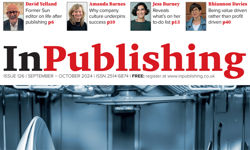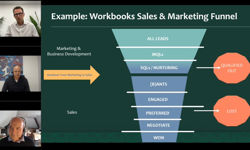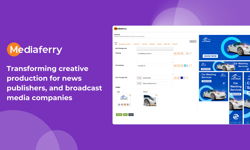In our last installment, we saw many US consumer magazines faced with a tough choice. The short-term options: 1. Convince media buyers that circulation that was formerly reported on publishers’ statements as paid, but is now being reported as nonpaid (in ABC’s case, in a class called "verified"), should be accepted as counting toward rate bases that were formerly defined as 100% paid. 2. Reduce or eliminate such circulation on statements, and report lower total circulation levels that would, in some cases, fall below the rate base totals promised. (Got that? If not, hit the "back" button to last issue’s column. And no fast-forwarding past the less riveting portions, please!)
Not to leave you hanging, some answers are emerging now that most statements for the reporting period ending June 06 (the first to show verified) have been filed, and the tallies are starting to become public.
What do we see? Although only about 40% (225) of ABC-audited titles reported verified, those copies totalled approximately 10.7 million, or 3.8% of the total paid / verified circulation for all ABC titles reporting thus far, according to publishing consultant / circulation analyst Baird Davis.
If you’ve been following closely, you will not be surprised to learn that the preponderance of magazines that did report verified are titles that declare rate bases — that in fact, 75% of those with rate bases had some portion of verified on their files. Nor will you be surprised to see it confirmed that nearly 80% of verified consists of subs distributed by agents to public places like physicians’ offices, hotels and transportation hubs.
In other words, it’s now clear that publishers have decided to (literally) stand up and be counted. They have chosen to report these copies and defend their value to media buyers.
The word on the street is that there is already significant pushback from the advertising community. It is, after all, media buyers’ job to negotiate on behalf of their clients, and it was hardly unexpected that some would take a hard line and insist that publishers who had defined their rate bases as all-paid should not be able to change the game rules after the fact.
Good Riddance to a Hypocritical, Ineffective System
However, publishers are wise to, at long last, confront the core issue here — the value of paid versus nonpaid circulation from an advertiser’s standpoint.
The publishing and media communities were both very much involved in creating a system (and rules) in which the lines between paid and nonpaid became blurred because the realities of the US marketplace / consumer behaviour were not being straightforwardly addressed.
When you have media buyers / advertisers insisting that copies paid for at any price (one cent or more) are inherently more valuable than nonpaid copies (no matter if their distribution and make-up are audited) — and simultaneously using syndicated readership levels as the primary metric for including a magazine in a media plan, you will have publishers finding ways to try to make public place and other copies technically qualify as paid.
As previously noted, public place circulation not only generates the highest readers-per-copy, but has been shown to have high demographics. Both ABC and BPA require public place recipient opt-outs. Both have systems for breaking out various nonpaid by type of location or type of recipient.
Further, all signs point to the retention, if not expansion, of nonpaid portions of consumer magazine circulation — not just public place / verified circulation, but other types of circulation not paid for by the consumer. For primarily paid titles, such channels, along with low-priced subscriptions, are an important means of getting the product into the hands of consumers who are prospective paid subscribers, or subscribers who will get hooked on the magazine and be willing to renew at more realistic prices. It’s also worth noting that a large and growing number of successful US consumer titles (including many glossies serving the very affluent) are launched with models of primarily or fully nonpaid circulation.
While such models may make little sense in the UK and European magazine markets, perhaps none of us can completely shrug off phenomena such as the growth of free newspapers — if only from a conceptual standpoint. Several studies (some conducted by ad agency researchers) have concluded that consumers who see an ad in a nonpaid coy are as likely to purchase the product, seek more information about it, etc as those who see it in a paid copy. (See www.magazine.org/Circulation/12736.cfm for research summaries.)
Indeed, even now, media buyers who really understand magazine reader dynamics are not ipso facto refusing to pay for all verified and other nonpaid copies; instead, they are demanding that publishers demonstrate with hard data that the readers of these copies fit their clients’ target audiences and deliver real value for their investments.
There’s a lot of wrangling ahead as publishers and advertisers try to find common ground on what constitutes value. But at least they’re finally getting on with the process.
FEATURE
Looking Nonpaid Circulation Issues in the Eye … At Long Last
In the latest installment on the US consumer magazine saga, Karlene Lukovitz reports that it’s now clear that, once pushed into a corner, publishers are choosing to stand and fight with media buyers about the value of nonpaid circulation. The pain is palpable, but it’s high time that both sides faced the realities of the marketplace and came to terms.










